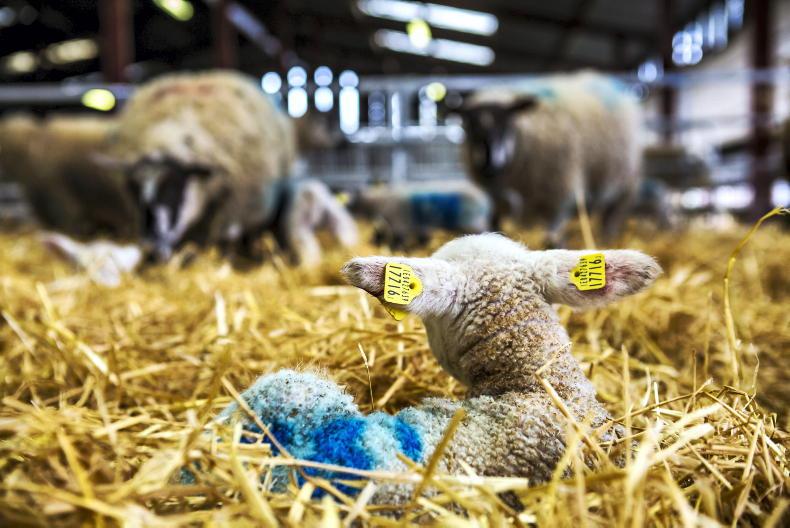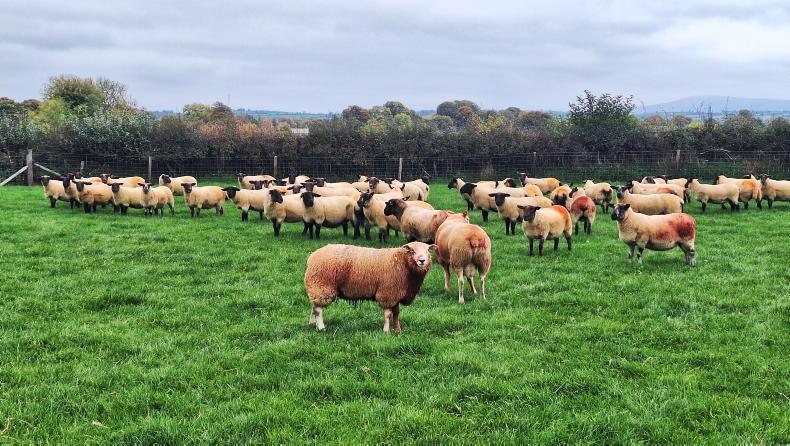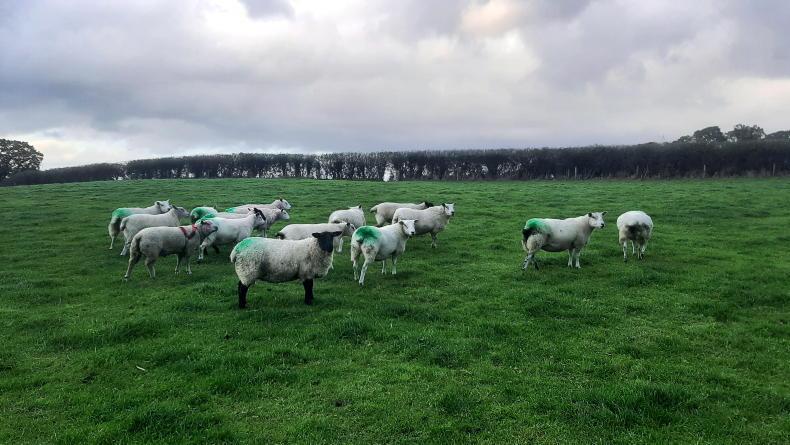The Sheep Ireland LambPlus programme recorded a sharp jump in applications prior to its closing date of midnight on 1 December. 
The number of flocks seeking to participate in the programme for 2021 increased by 110 to reach its highest level of 830 pedigree flocks.
As reflected in Figure 1, this is the highest increase in participation since the Sheep Technology Adaption Programme (STAP), when participation was driven by a requirement for commercial farmers participating in STAP to purchase rams possessing €uro-Star evaluations.
Deadline extension
Eamon Wall, Sheep Ireland, said the increase in participation of pedigree flocks is hugely positive for the sheep industry.
“With over half of the rams entering the national breeding flock each year coming from flocks outside of pedigree societies and not participating in performance recording, we know there is massive potential to drive further improvement in this area,” he said.
It is good to see these developments now translating into higher participation
“Sheep Ireland has been working hard to expand the range of services offered to LambPlus members each year, with the new ram search facility, data recording app and subsidised genotyping just some of the initiatives benefiting members.
“It is good to see these developments now translating into higher participation.”
Due to the high level of new requests to participate in LambPlus in 2021, a decision has been taken to extend the deadline for new members who have not participated in LambPlus previously until midnight on 15 December.
This will also allow pedigree breed societies more time to process new applications. To support the growth of sheep breed societies, Sheep Ireland insists that all LambPlus members must be a current member of a breed society (where one exists).
The sign-up fees are €50 for breeds defined as Group 1 breeds and €100 for breeds defined as Group 2 breeds.
Group 1 breeds are those that use the Sheep Ireland database to host their society flock book and include the Belclare, Beltex, Blue Texel, Charollais, Galway, Irish Suffolk, Rouge, Texel and Vendéen breeds.
Group 2 breeds are other breeds outside of this list and Sheep Ireland explains the higher fee for these is due to increased administration. Hill flocks and commercial flocks joining Sheep Ireland are free for the coming year.
Group 1 flocks can join LambPlus via their online Sheep Ireland account, while Group 2 flocks can download a sign-up form at www.sheep.ie or call 023 882 0451 / email query@sheep.ie.
Tagging lambs
Tagging lambs at birth is central to optimum performance recording. Sheep producers are often reluctant, however, to tag young lambs.
Eamon says that concerns can be minimised by following a simple procedure. Lambs should be allowed to bond with ewes for at least 12 hours after birth.
Eamon stresses that tag placement is critical to prevent future issues
This will give sufficient time for lambs to suckle, their fleece to dry and eliminate any risk of mis-mothering due to temporarily removing lambs for weighing and tagging. Eamon says it is also important to assess the lamb before proceeding with weighing and tagging. This includes assessing if the lamb is suckling, has a full belly and is showing no signs of any ailments.
With regards tagging, the first piece of advice is to ensure the lamb is restrained. Eamon stresses that tag placement is critical to prevent future issues and reducing the chance of damaging the ear and a potential infection establishing.
The tags should be stored safely when not in use and equipment used should be kept clean
The tag should be inserted midway in height of the ear and between the two main cartilage ridges running along the lamb’s ear. The ideal position is about a third of the length of the ear out from the lamb’s head or slightly further in breeds with thick ears. Where using wrap-around tags, take note to leave room for subsequent ear growth.
Hygiene is also a critical component. The tags should be stored safely when not in use and equipment used should be kept clean. Producers differ in their approach in terms of using disinfectant sprays. Some producers prefer to spray a simple disinfectant on the ear prior to tagging, while others use an antimicrobial spray such as alamycin.
The Sheep Ireland LambPlus programme recorded a sharp jump in applications prior to its closing date of midnight on 1 December. 
The number of flocks seeking to participate in the programme for 2021 increased by 110 to reach its highest level of 830 pedigree flocks.
As reflected in Figure 1, this is the highest increase in participation since the Sheep Technology Adaption Programme (STAP), when participation was driven by a requirement for commercial farmers participating in STAP to purchase rams possessing €uro-Star evaluations.
Deadline extension
Eamon Wall, Sheep Ireland, said the increase in participation of pedigree flocks is hugely positive for the sheep industry.
“With over half of the rams entering the national breeding flock each year coming from flocks outside of pedigree societies and not participating in performance recording, we know there is massive potential to drive further improvement in this area,” he said.
It is good to see these developments now translating into higher participation
“Sheep Ireland has been working hard to expand the range of services offered to LambPlus members each year, with the new ram search facility, data recording app and subsidised genotyping just some of the initiatives benefiting members.
“It is good to see these developments now translating into higher participation.”
Due to the high level of new requests to participate in LambPlus in 2021, a decision has been taken to extend the deadline for new members who have not participated in LambPlus previously until midnight on 15 December.
This will also allow pedigree breed societies more time to process new applications. To support the growth of sheep breed societies, Sheep Ireland insists that all LambPlus members must be a current member of a breed society (where one exists).
The sign-up fees are €50 for breeds defined as Group 1 breeds and €100 for breeds defined as Group 2 breeds.
Group 1 breeds are those that use the Sheep Ireland database to host their society flock book and include the Belclare, Beltex, Blue Texel, Charollais, Galway, Irish Suffolk, Rouge, Texel and Vendéen breeds.
Group 2 breeds are other breeds outside of this list and Sheep Ireland explains the higher fee for these is due to increased administration. Hill flocks and commercial flocks joining Sheep Ireland are free for the coming year.
Group 1 flocks can join LambPlus via their online Sheep Ireland account, while Group 2 flocks can download a sign-up form at www.sheep.ie or call 023 882 0451 / email query@sheep.ie.
Tagging lambs
Tagging lambs at birth is central to optimum performance recording. Sheep producers are often reluctant, however, to tag young lambs.
Eamon says that concerns can be minimised by following a simple procedure. Lambs should be allowed to bond with ewes for at least 12 hours after birth.
Eamon stresses that tag placement is critical to prevent future issues
This will give sufficient time for lambs to suckle, their fleece to dry and eliminate any risk of mis-mothering due to temporarily removing lambs for weighing and tagging. Eamon says it is also important to assess the lamb before proceeding with weighing and tagging. This includes assessing if the lamb is suckling, has a full belly and is showing no signs of any ailments.
With regards tagging, the first piece of advice is to ensure the lamb is restrained. Eamon stresses that tag placement is critical to prevent future issues and reducing the chance of damaging the ear and a potential infection establishing.
The tags should be stored safely when not in use and equipment used should be kept clean
The tag should be inserted midway in height of the ear and between the two main cartilage ridges running along the lamb’s ear. The ideal position is about a third of the length of the ear out from the lamb’s head or slightly further in breeds with thick ears. Where using wrap-around tags, take note to leave room for subsequent ear growth.
Hygiene is also a critical component. The tags should be stored safely when not in use and equipment used should be kept clean. Producers differ in their approach in terms of using disinfectant sprays. Some producers prefer to spray a simple disinfectant on the ear prior to tagging, while others use an antimicrobial spray such as alamycin.











SHARING OPTIONS